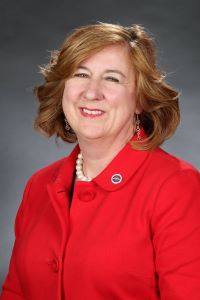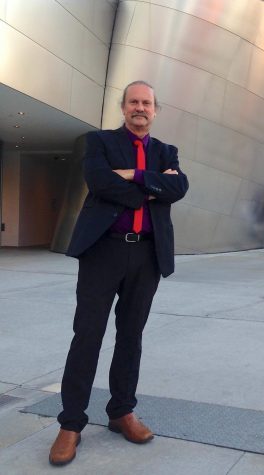Final four potential provosts
February 20, 2020
CWU is searching for a new provost following Katherine Frank’s abrupt departure from her provost position. Lynn Franken is currently serving as the interim provost until an official replacement is named.
On June 10, 2019 Frank was released from her duties as provost and, according to Amy Claridge, the Associate Professor and Program Director for Family and Child Life, the search for a replacement has been underway ever since.
“She left the provost position and stepped into a new role working directly with the president,” Claridge said. “And now she has left completely and she has a job as president at a university in Wisconsin.”
At CWU the provost is the Vice President of the Division of Academic and Student Life. This means they are in charge of the majority of services which students use most often.
“Our provost is the chief academic officer, she supervises all the deans,” Claridge said.
The search has been narrowed down to four candidates. Claridge is in charge of the search for the replacement provost.
“Our provost has a unique position,” Claridge said. “The position is also over all of student life so there is a very big impact on students.”
The provost has a position overseeing most elements of the university which students interact with on a daily basis.
“It’s sort of a new structure at Central to have academics and student life under one person,” Claridge said. “There’s a lot of advantages to that. Academic life isn’t disconnected from extracurriculars.”
According to Claridge, students should be excited about having a new provost who will be more involved with the student body. Under the integrated student life and academic system, the provost at CWU will be more directly involved with the student body than at other universities. This unity provides a unique ability to improve two major aspects of the university simultaneously.
There are currently four main candidates for the position: Mitch Avila, Michelle DenBeste, Britt Rios-Ellis and John Ernst. All four candidates currently hold a position as Dean at their respective universities, and all but Ernst come from the California State University administration.
“I think there’s a lot of similarities in their mission at Cal State,” Claridge said. “I think the people that rose to the top share a lot of our values.”
All four candidates have years of experience working as deans in the colleges they are coming from.
Michelle DenBeste

Michelle DenBeste comes from California State University, Fresno (CSUF). A major focus of her proposal is to allocate funding to small and large major programs and to ensure no dollar is wasted when it comes to grants which are related to student programs.
Like Avila, she wants to increase diversity in the faculty at CWU and has been successful in her endeavors at her current tenure. Another issue DenBeste looks to resolve is the lack of transparency in the university’s decision making. She did this at CSUF by increasing her presence in the college executive committee and created other committees which helped the departments work together. In her current tenure at CSUF she has decentralized the department budgets in order to facilitate cooperation between departments over funding.
Departmental cooperation is one of her areas of focus since it is central to the efficiency of the school administration. An example of this streamlining of administrative process is her creation of a cross department collaboration to aid students unsure of their desired major in graduation.
Britt Rios-Ellis
Britt Rios-Ellis recognizes CWU is made up of 40% first generation students and looks to create a welcoming and productive environment. Being from the CSU system, she has a focus on maintaining CWU’s diversity and inclusivity.

She has over 25 years of experience in teaching and managing departments so she understands what is involved in creating an environment conducive to learning.
She is a founding member of the CSULB Center for Latino Community Health and understands the operations of a diverse campus. She has worked within her institution to acquire funding through Congressional Directed Spending Initiatives. The majority of her work is with multicultural groups that are focused on expanding the multicultural enriching programs on campus.
A personal goal she has is to increase her contact with students in order to maintain an understanding between the school administration and the student groups. She has created multiple student leadership councils such as a COSS council in order to achieve this goal.
Mitch Avila

Mitch Avila is currently the Dean of the College of Arts and Humanities at California State University Dominguez Hills (CSUDH). Because of his time at a very diverse university, he is focused on creating a diverse and progressive environment.
At CSUDH he bolstered their Women’s Studies and Africana Studies departments through increased financial support and campaigns which led to increased enrollment. In addition to this, he encouraged professors to remain active scholars and artists by using some of their budget to allow for time spent conducting research or producing their art.
Avila’s plan for encouraging professors to enhance their professional writing and art careers has a positive effect on students since their professors are more knowledgeable and experienced in their fields as a result of being able to be more practiced.
Avila’s goals for CWU are simple: to improve CWU by hiring amazing faculty and to create positive change wherever he can. Students interactions with faculty are a contributing factor to their experience at university.
John P. Ernst

John P. Ernst is the Dean of the Caudill College of Arts, Humanities and Social Sciences at Morehead State University. During his time as Dean he has worked on a leadership team which organizes the MSU gala and garners $150,000 to support student programs.
Additionally, he has developed a successful plan to increase enrollment and retention rates among first year students. Under his plan, the retention rates rose from 65% to 72% in just three years.
He created a revamped space in the library which contained multiple couches, computers and smart boards. These were intended to be social hubs as well as intellectual spaces to study in which could be used by professors and students. He accomplished this by collaborating with numerous departments as well as the food services provider to increase library use.
He has assisted in the creation of the President’s Performing Arts and Speakers Program which was created to create a stimulating educational conversation among students on campus by hosting speakers with which the students can connect with.


